- About MAA
- Membership
- MAA Publications
- Periodicals
- Blogs
- MAA Book Series
- MAA Press (an imprint of the AMS)
- MAA Notes
- MAA Reviews
- Mathematical Communication
- Information for Libraries
- Author Resources
- Advertise with MAA
- Meetings
- Competitions
- Programs
- Communities
- MAA Sections
- SIGMAA
- MAA Connect
- Students
- MAA Awards
- Awards Booklets
- Writing Awards
- Teaching Awards
- Service Awards
- Research Awards
- Lecture Awards
- Putnam Competition Individual and Team Winners
- D. E. Shaw Group AMC 8 Awards & Certificates
- Maryam Mirzakhani AMC 10 A Awards & Certificates
- Two Sigma AMC 10 B Awards & Certificates
- Jane Street AMC 12 A Awards & Certificates
- Akamai AMC 12 B Awards & Certificates
- High School Teachers
- News
You are here
Who's That Mathematician? Paul R. Halmos Collection - Page 50
For more information about Paul R. Halmos (1916-2006) and about the Paul R. Halmos Photograph Collection, please see the introduction to this article on page 1. A new page featuring six photographs will be posted at the start of each week during 2012 and early 2013.
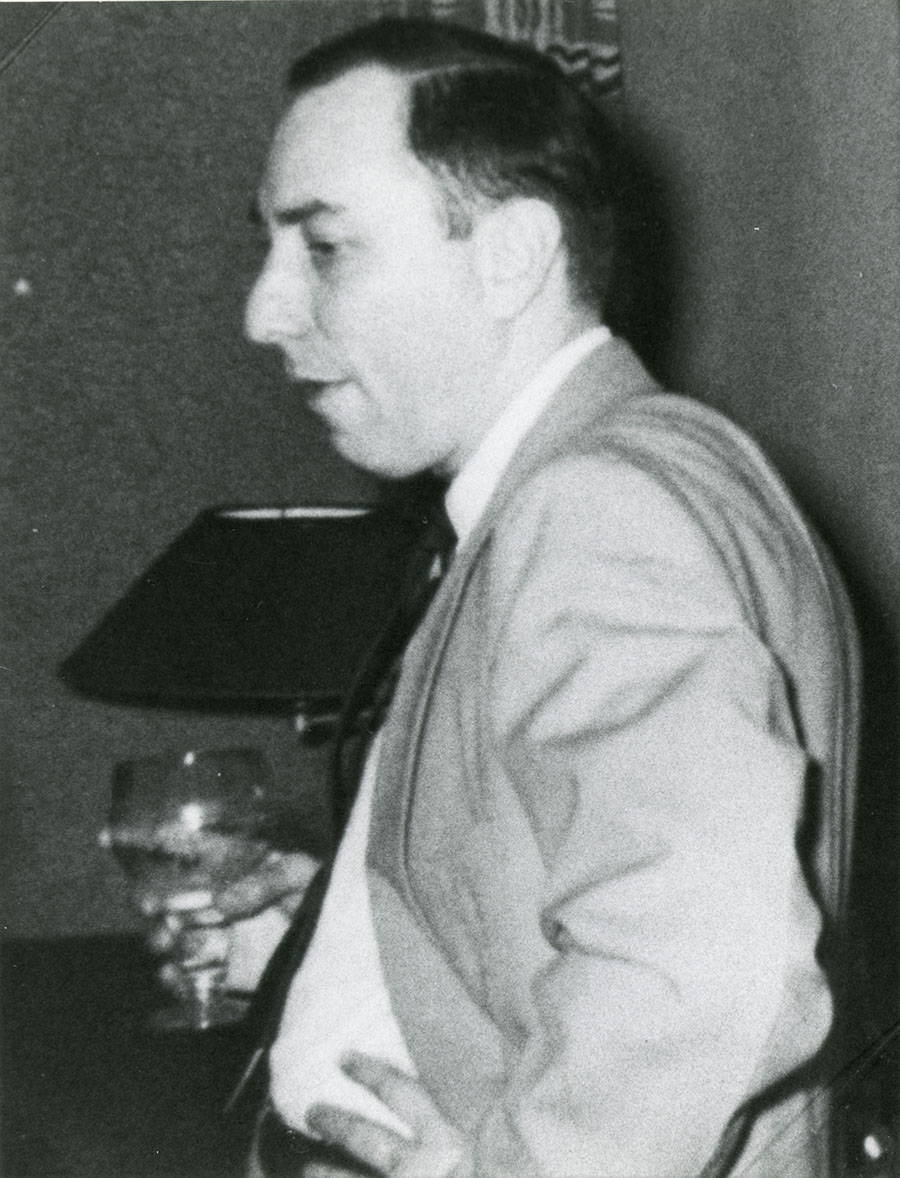
Halmos photographed Edwin H. Spanier (1921-1996) in about 1955. Spanier was on the faculty of the University of Chicago from 1948 to 1959, as was Halmos from 1946 to 1961. After serving in the U.S. Army Signal Corps during World War II, Spanier earned his Ph.D. in algebraic topology under advisor Norman Steenrod at the University of Michigan in 1947. He spent the academic year 1947-48 at the Institute for Advanced Study in Princeton, as did Halmos. Spanier returned to IAS during 1951-52 and 1958-59. In 1959, he became professor of mathematics at the University of California, Berkeley, where he remained for the rest of his career. He worked on a wide range of topics in algebraic topology, including homology groups of fibre spaces with Shiing-Shen Chern (pictured on page 9 and page 38 of this collection) and duality in homotopy theory with Henry Whitehead, having a great influence on the subject and its various applications. Beginning in 1961, he also worked on formal languages in theoretical computer science. (Sources: MacTutor Archive, IAS)
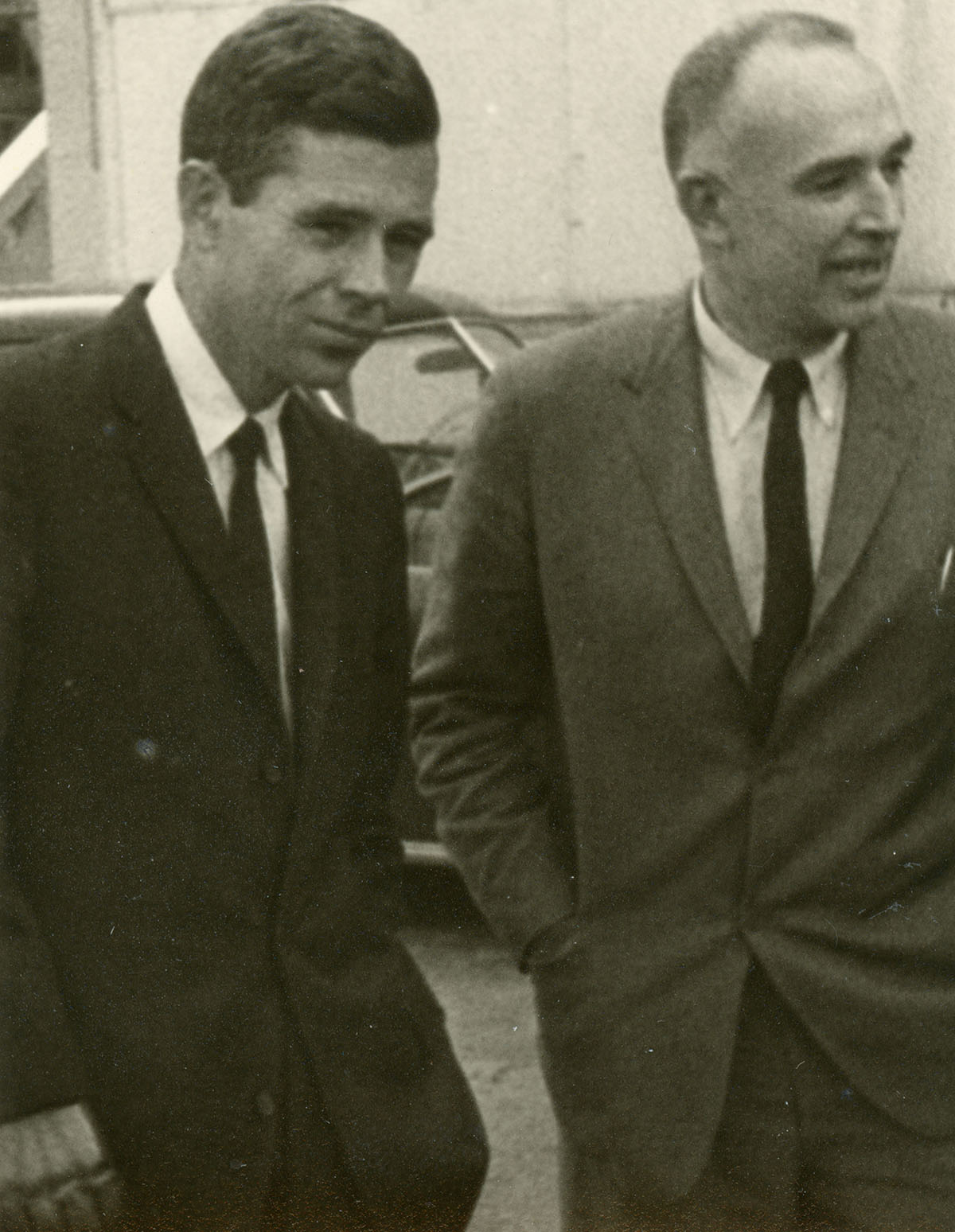
Edwin E. Floyd (1929-1990), left, and Donald Spencer (1912-2001) were photographed by Halmos no earlier than January and no later than April of 1960.
Topologist Edwin E. Floyd earned his Ph.D. from the University of Virginia in 1948 with the dissertation “The Extension of Homeomorphisms,” written under advisor Gordon Whyburn. After teaching at Princeton University during the 1948-49 academic year, he returned to the University of Virginia, where he continued to work with Whyburn. Floyd is perhaps best known for his collaboration with Pierre Conner on equivariant cobordism, resulting in the monograph, The relation of cobordism to K-theories (Springer, 1966). He spent the rest of his career at Virginia, becoming Taylor Professor of Mathematics in 1966 and University Provost in 1981. (Sources: Mathematics Genealogy Project, University of Virginia History, MathSciNet)
Donald Spencer earned his Ph.D. in analytic number theory in 1939 from Cambridge University with the dissertation “On a Hardy-Littlewood Problem of Diophantine Approximation.” His Ph.D. advisor was none other than J. E. Littlewood (pictured on page 31 of this collection) and, not surprisingly, he also worked with G. H. Hardy. Spencer then joined the faculty of MIT in Cambridge, Massachusetts, where he had been an undergraduate aeronautical engineering major, but moved to Stanford University in Palo Alto, California, in 1942. He was at Stanford from 1942 to 1950 and 1963 to 1968 and at Princeton University from 1950 to 1963 and from 1968 to 1978. During his career, Spencer worked primarily on complex analysis and is best known for his joint work with Fields Medalist Kunihiko Kodaira on deformations of complex manifolds. Spencer was born and raised in Boulder, Colorado, and, after he retired from Princeton in 1978, he moved to Durango, Colorado. (Source: MacTutor Archive)
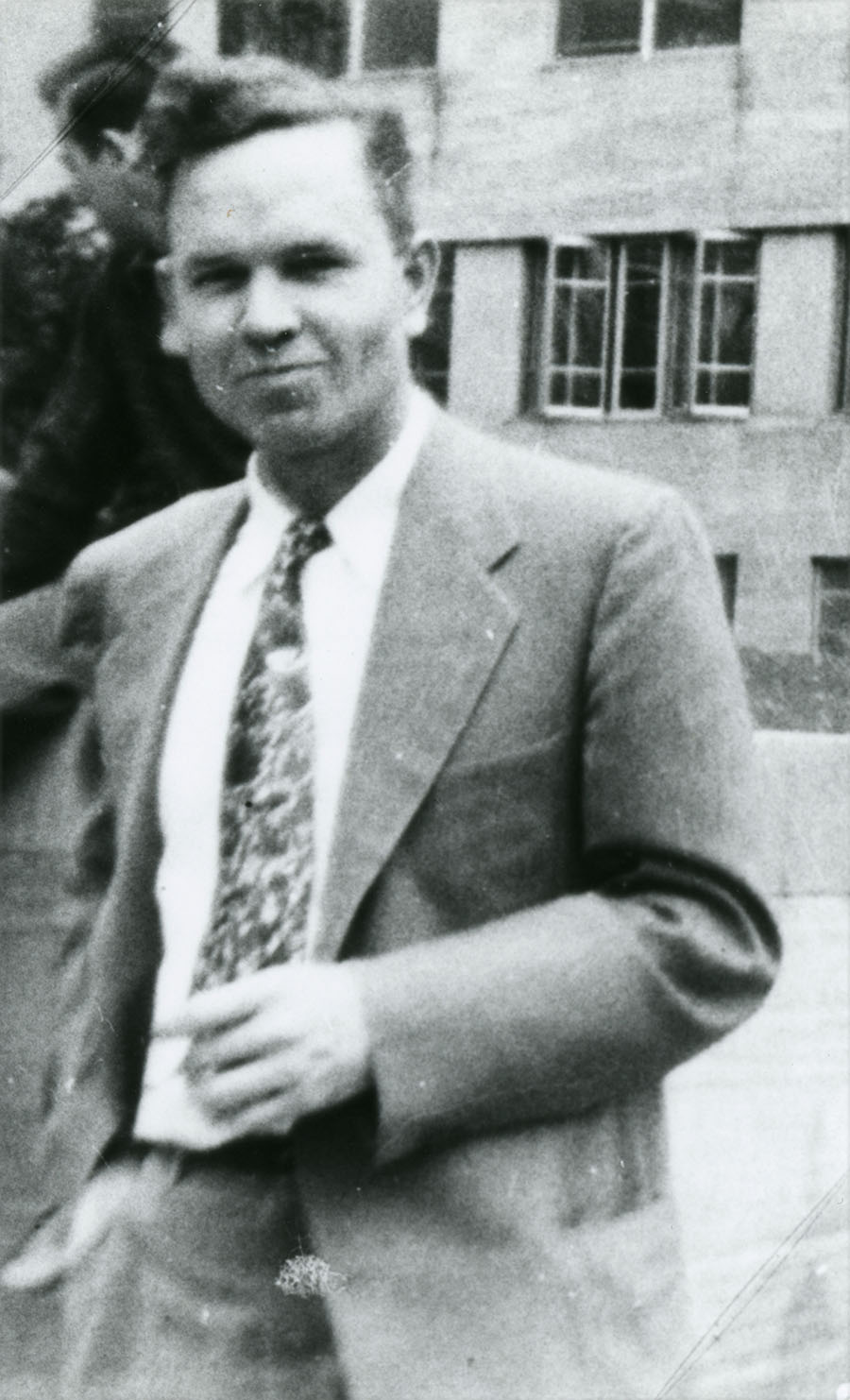
Halmos photographed Norman Steenrod (1910-1971) in about 1955. After being inspired to study topology by Raymond Wilder (see page 43 of this collection) in the only mathematics course he took as an undergraduate at the University of Michigan, Steenrod eventually followed Wilder to Princeton to work toward a Ph.D. in mathematics. He earned his Ph.D. in 1936 with the dissertation “Universal Homology Groups,” written under advisor Solomon Lefschetz. After teaching at Princeton (1936-39), the University of Chicago (1939-42), and the University of Michigan (1942-47), Steenrod returned to Princeton, where he spent the rest of his career. He is best known for introducing Steenrod squares and the Steenrod algebra during the early 1940s, work described in his and David Epstein’s book, Cohomology Operations (1962); for his research on fibre bundles and his explication of this topic in his book The Topology of Fibre Bundles (1951, reprinted by Princeton University Press in 1999); and for his and Samuel Eilenberg’s book, Foundations of Algebraic Topology (1952). (See page 13 of this collection for a photo of Eilenberg.) (Sources: MacTutor Archive, Mathematics Genealogy Project, MathSciNet)
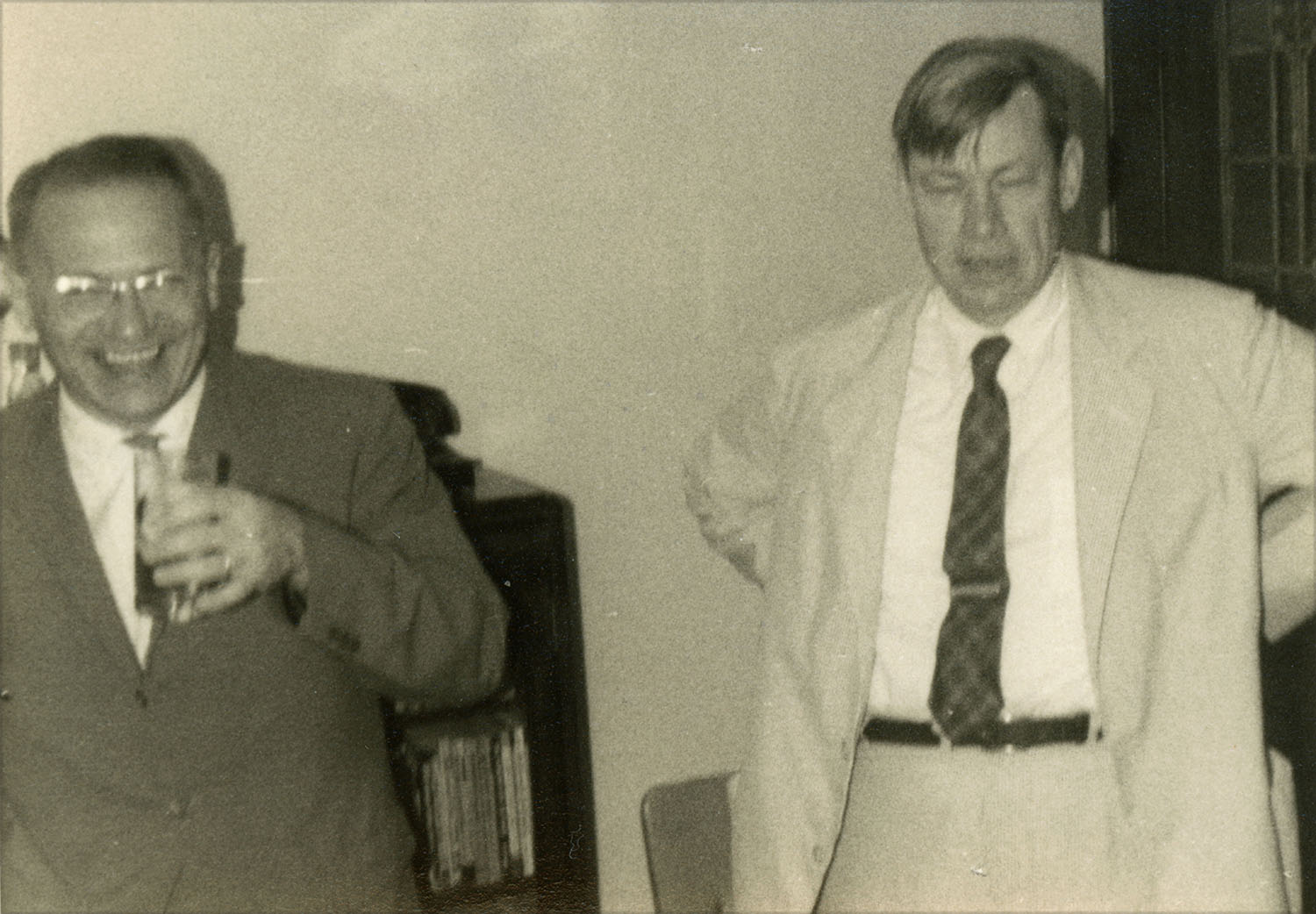
Béla Szőkefalvi-Nagy (1913-1998), left, and Marshall Stone (1903-1989) were photographed by Halmos in July or August of 1961. Other photographs of Szőkefalvi-Nagy appear on page 9 and page 14 of this collection, where you can read more about him, with additional photos on pages 36, 38, and 43. Stone is pictured on page 4 of this collection, where you can read more about him, and on page 38.
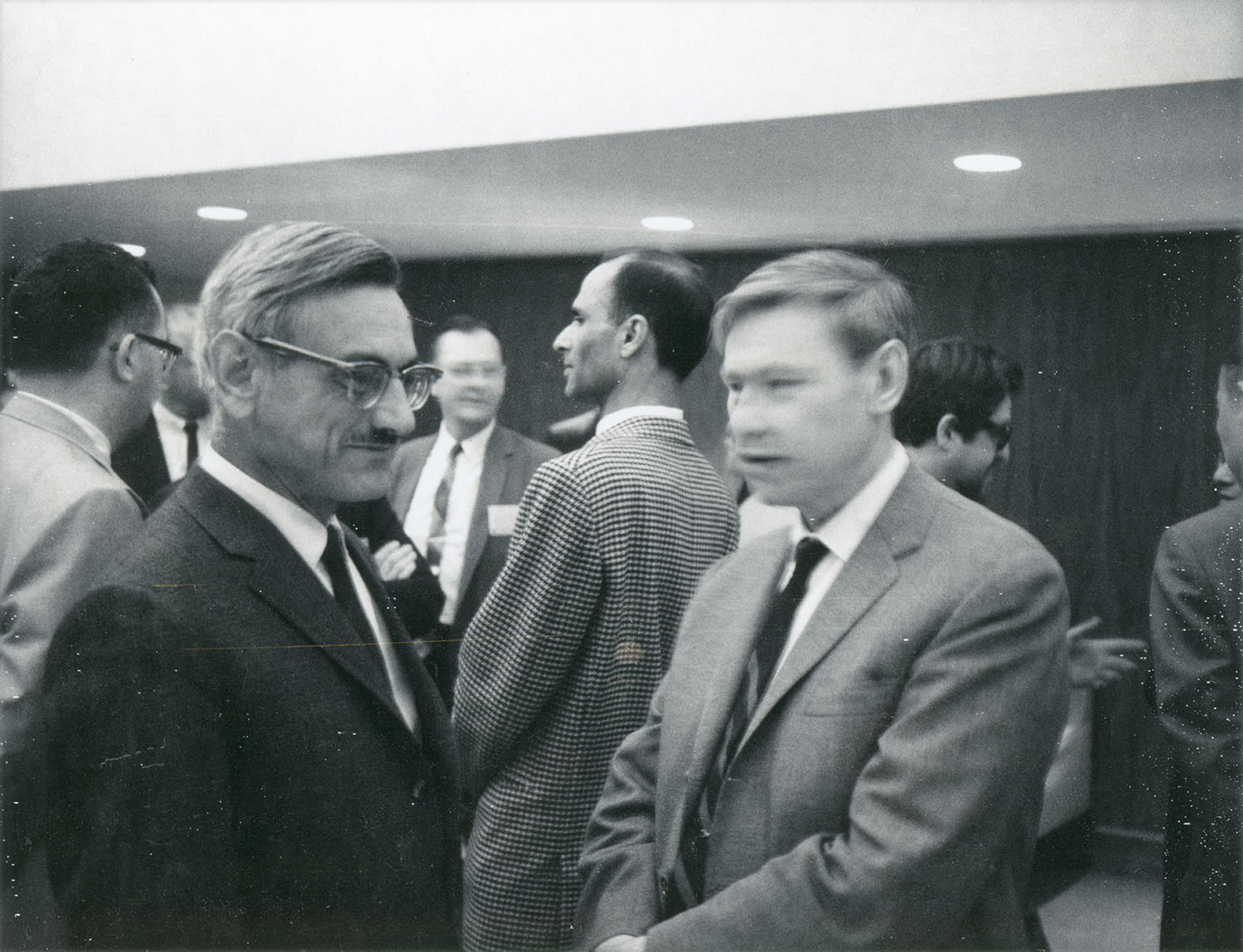
Halmos photographed Béla A. Lengyel (1910-2002), left, and Marshall Stone (1903-1989) on May 21, 1968, in Chicago, Illinois, possibly at a celebration of Stone’s retirement from the University of Chicago. Stone also is pictured above and on page 4 and page 38 of this collection. Lengyel and Stone published the paper, “Elementary proof of the spectral theorem,” together in 1936. This is the first paper of Lengyel’s that appears in MathSciNet; his second paper was written with Paul Erdős in 1938, giving him an Erdős number of 1. (Erdős is pictured on pages 3, 10, 14, and 27 of this collection.) Lengyel earned his doctorate in mathematical physics from Pázmány University (now Lóránd Eötvös University) in Budapest, Hungary, in 1935, with a dissertation on linear operators written under John von Neumann (who was then at Princeton). During the 1935-36 academic year, he studied mathematics at Harvard with Stone, who was a professor there. He returned to the U.S. in 1939, where he taught at Rensselaer Polytechnic Institute in Troy, New York, and various other institutions; worked as a physicist at the Naval Research Laboratory in Washington, D.C., from 1946 to 1952 and at Hughes Research Laboratories in Los Angeles, California, from 1952 to 1963; and, in 1963, founded the physics and astronomy department at California State University, Northridge, serving as its chair until 1970, and retiring in 1977. He is best known among physicists for writing the first technical monograph on the then-new technology of lasers in 1962. (Sources: MathSciNet; Los Angeles Times obituary; Bela Adalbert Lengyel obituary by Barney Bales, CSUN Physics)
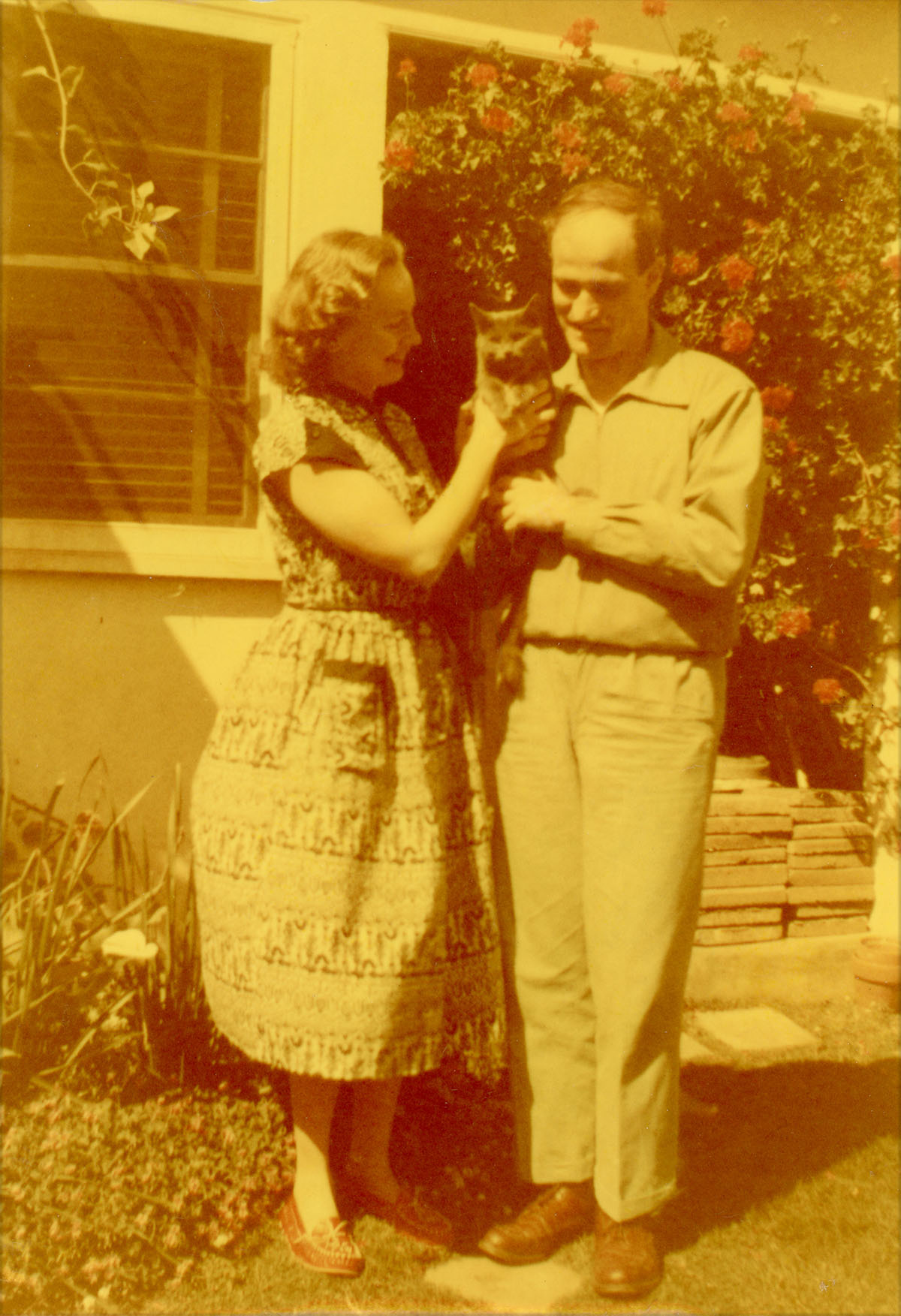
Halmos photographed Louise and Ernst Straus (1922-1983) in 1953, probably in Los Angeles, California. Ernst Straus earned his Ph.D. in 1948 from Columbia University with the dissertation “Some results in Einstein’s unified field theory,” under advisors F. J. Murray and Albert Einstein. Straus was Einstein’s assistant at the Institute for Advanced Study in Princeton from 1944 to 1948 and published three joint papers with him. He also was interested in geometry, number theory, combinatorics, graph theory, and linear algebra, and published 21 joint papers with Paul Erdős, giving him an Erdős number of 1 21 times over. Born in Munich, Germany, Straus moved with his family to Jerusalem, Palestine, in 1933. He studied at Hebrew University in Jerusalem before moving to New York City in 1941 to study at Columbia University. In 1948, he joined the faculty at the University of California, Los Angeles, where he spent the rest of his career. Halmos was at the Institute for Advanced Study during 1947-48 and he and Straus knew each other then. They may have first met even earlier, as Halmos also was at IAS from 1939 to 1942 and from May to September of 1946. (Sources: MacTutor Archive; Mathematics Genealogy Project; Ernst Gabor Strauss Calisphere obituary; Paul Halmos, I Want to Be a Mathematician: An Automathography, Springer, 1985, pp. 127-8, 140-1)
For an introduction to this article and to the Paul R. Halmos Photograph Collection, please see page 1. Watch for a new page featuring six new photographs each week during 2012.
Regarding sources for this page: Information for which a source is not given either appeared on the reverse side of the photograph or was obtained from various sources during 2011-12 by archivist Carol Mead of the Archives of American Mathematics, Dolph Briscoe Center for American History, University of Texas, Austin.
Janet Beery (University of Redlands) and Carol Mead (Archives of American Mathematics, University of Texas, Austin), "Who's That Mathematician? Paul R. Halmos Collection - Page 50," Convergence (June 2013), DOI:10.4169/loci003801




